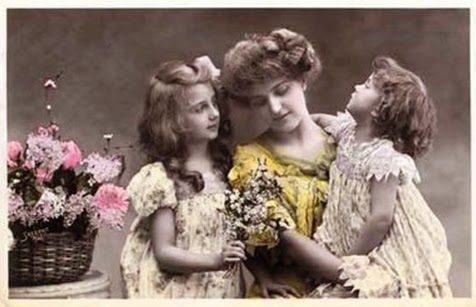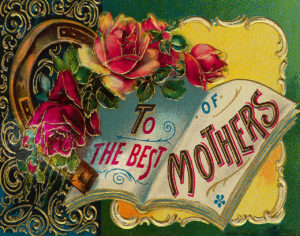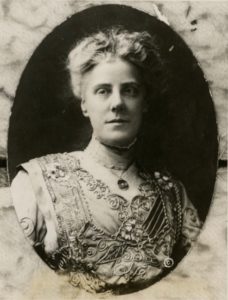Elfster celebrates giving and no one gives more than the sometimes under-appreciated awesome moms everywhere. What better way to celebrate than to look back on the history of Mother’s Day?
Mother’s Day: The Beginnings

Our modern American Mother’s Day had antecedents. The ancient Greeks and Romans held festivals honoring the mother goddesses Rhea and Cybele. The most direct ancestor of the modern Mother’s Day, however, is the early Christian festival called “Mothering Sunday. This holiday dates back centuries to pre-Reformation days in Great Britain and much of the rest of Europe.
“Children presented their mothers with flowers and other gifts to show their appreciation.”
Mothering Sunday gradually became a more secular holiday on which children presented their mothers with flowers and other gifts to show their appreciation. The tradition gradually became less popular until revived by Constance Smith (1873 – 1938) who was inspired by reading a newspaper article about Anna Jarvis’ campaign in America. Unlike the American Mother’s Day, which falls on the second Sunday of May, the British Mothering Day moves about. Why? Because it falls on the fourth Sunday of Lent, the period of Christian fasting that leads up to Easter. This year if fell on March 31.
Leading up to Mother’s Day in the U.S.

The precursor to the Mother’s Day celebration in the United States began before the Civil War though it didn’t become a national holiday until over fifty years later. In the 1850s Mrs. Ann Marie Jarvis organized several “Mother’s Day Work Clubs” in West Virginia. Her goal was to combat the poor sanitary and health conditions that contributed to the high mortality rate of children. (She lost eight of the twelve children she bore.)
In 1868 Jarvis changed the name of the organization to “Mothers’ Friendship Day” and expanded it to include a large portion of the country still divided by the Civil War. Mothers met with former Confederate soldiers as well as those of the Union to encourage reconciliation.
Julia Ward Howe, abolitionist, women’s rights activist, civil rights activist, songwriter and poet, also served as a proponent of celebrating mothers. In 1870 she wrote the “Mother’s Day Proclamation” in which she called women to act toward promoting world peace. She campaigned for observation of a “Mother’s Peace Day” to be celebrated every June 2.
Other early day proponents of Mother’s Day included temperance activist Juliet Calhoun Blakely of Albion, Michigan and the pair, Mary Towles Sasseen and Frank Hering. Hering has been called “the father of Mother’s Day.”
Anna Jarvis’ Fight to Make Mother’s Day Official in America

Following the death of her mother in 1905, Anna Jarvis, daughter of Ann Reeves Jarvis, thought of Mother’s Day as a way to honor the sacrifices mothers made for their children. A Philadelphia department store owner, John Wanamaker, financed her efforts to establish a Mother’s Day holiday. The first celebration took place in a Methodist church in Grafton, West Virginia in May, 1908.
The success of the first celebration encouraged Jarvis, who remained unmarried and childless for life, to have Mother’s Day added as an official national holiday. Using the argument of bias toward male achievement in American holidays, she began a huge letter writing campaign to newspapers and prominent politicians pushing the adoption of a national holiday honoring motherhood.
Jarvis formed the Mother’s Day International Association to help promote the holiday. By 1912 she had encouraged many churches, towns and states to observe Mother’s Day as an annual holiday. Finally, in 1914 President Woodrow Wilson signed an agreement to make the second Sunday in May observed as Mother’s Day.
Jarvis had looked upon Mother’s Day as a celebration between mothers and families. She conceived of the day as one of visiting one’s mother or attending church. She initiated the practice of wearing a white carnation as a symbol of the occasion. But soon after Mother’s Day became a national holiday, greeting card companies, florists, confectioners and other merchants raced to commercialize it.

By 1920, she began to denounce the commercialization as degrading her original plan and spoke out against people buying from the merchants taking advantage of the holiday. She originated vast numbers of lawsuits against companies and groups using the name “Mother’s Day” and lobbied the government to remove it from the American calendar. By the time she died in 1948 she had spent most of her personal wealth on legal fees.
So this Mother’s Day, let’s remember that our moms don’t expect expensive gifts. Most moms will treasure burnt toast and orange juice served in bed with a handwritten card and smiles.
If you are looking for inspiration for your mom, visit our Mother’s Day gift guides. Or, post a picture of your Mom on our Facebook page, on Twitter @Elfster, and on Instagram @Elfster. We can’t wait to see your awesome mom!


